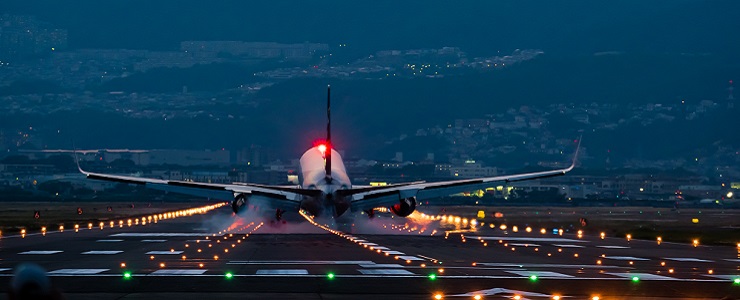
Ever since the invention of powered human flight, there has been a need to provide places for these flying machines to take off and land. As technology advanced, the need for an aircraft to land in less than optimal daylight conditions led to the integration of lighting on the airfield. This, now, required the ability to turn these lights on when needed and off when not, leading to the creation of the Airfield Lighting Control System.
I n the early days, controlling lights on an airfield was accomplished through use of mechanical switches, allowing the operator to change the lights remotely. Eventually, indicator lights were added to provide a basic level of monitoring. As airports grew in size and complexity, these switch panels also increased in size and complexity.
n the early days, controlling lights on an airfield was accomplished through use of mechanical switches, allowing the operator to change the lights remotely. Eventually, indicator lights were added to provide a basic level of monitoring. As airports grew in size and complexity, these switch panels also increased in size and complexity.
B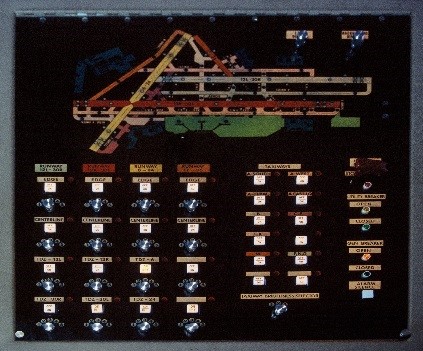 y the early 1990s, airports needed a better solution than mechanical pushbuttons and switches to manage the control of airfield lights. They started incorporating more advanced technologies to handle the task, using either PLC or PC-based control systems. Airports the world over began installing these more advanced methods to control their lights.
y the early 1990s, airports needed a better solution than mechanical pushbuttons and switches to manage the control of airfield lights. They started incorporating more advanced technologies to handle the task, using either PLC or PC-based control systems. Airports the world over began installing these more advanced methods to control their lights.
These control systems were also capable of providing their operator with a higher level of monitoring. Along with the ability to monitor whether the lights were on or off, airports could now monitor the electrical characteristics of their lighting circuits and even control and monitor individual light fixtures. These systems also gave the operator the ability to automate lighting control through predefined settings, allowing the operator to control all the lights on the airport by only selecting a few key variables.
Presently, the modern ALCMS (Airfield Lighting Control and Monitoring System) is managing more, increasingly complex operations on the airfield. Standards in both the FAA (AC 150/5345-56B) and ICAO (Annex 14, Volume 1, Part 5) have been defined to ensure quality standards are maintained. Integration between multiple systems is more prevalent than ever before. Operational concepts, such as Runway Status Lights and Follow-the-Greens, are examples of how complex system interactions are slowly becoming the norm instead of the exception. This presents a problem similar to issues witnessed before the widespread use of electronic control systems: the physical space requirements to house all the interfaces for these systems is increasing, without increasing the infrastructure space.
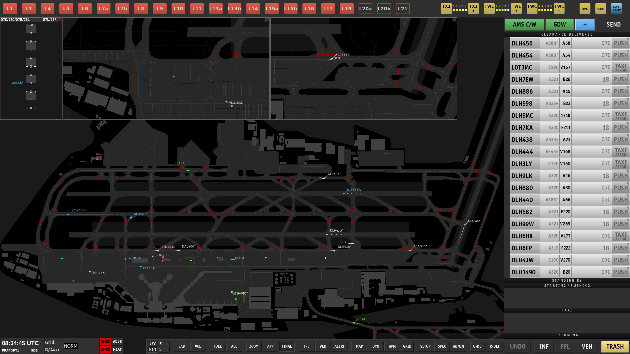 While we are presented with challenges, the future is bright. I believe we will continue to see ever increasing interactions between the complex systems that drive airport operations. We will start to see these systems being presented to the operator on a single unified HMI (Human Machine Interface. The SESAR (Single European Sky Air Traffic Management Research) project is currently working on addressing this with the ICWP (Integrated Controller Working Position) concept. This is helping reduce workload for air traffic and apron controllers thus increasing overall flight safety. ICWPs will continue to evolve, linking airfield lighting control and monitoring with other aircraft control operations including gate docking, low visibility guidance, surveillance, flight plan and progress.
While we are presented with challenges, the future is bright. I believe we will continue to see ever increasing interactions between the complex systems that drive airport operations. We will start to see these systems being presented to the operator on a single unified HMI (Human Machine Interface. The SESAR (Single European Sky Air Traffic Management Research) project is currently working on addressing this with the ICWP (Integrated Controller Working Position) concept. This is helping reduce workload for air traffic and apron controllers thus increasing overall flight safety. ICWPs will continue to evolve, linking airfield lighting control and monitoring with other aircraft control operations including gate docking, low visibility guidance, surveillance, flight plan and progress.
ADB SAFEGATE is meeting these challenges head on with its OneControl™ ICWP and the Reliance™ ALCMS in both the ICAO and FAA markets, providing a complete solution that is agile enough to meet future airport needs.
More information about OneControl and the Reliance family of airfield lighting control and monitoring systems can be found on our website:
ADB SAFEGATE is a leading provider of intelligent solutions that deliver superior airport performance and operations, and jointly identify and solve bottlenecks. Our consultative approach enables airports to improve efficiency, enhance safety and environmental sustainability, as well as reduce operational costs. Our portfolio includes solutions and services that harmonize airport performance, tackling every aspect of traffic handling and guidance, from approach, runway and taxiway lighting, to tower-based traffic control systems and intelligent gate and docking automation. ADB SAFEGATE has 1,000+ employees in more than 20 countries and serves some 2,500+ airports.





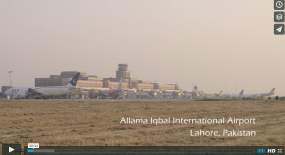


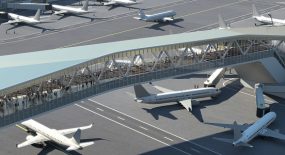


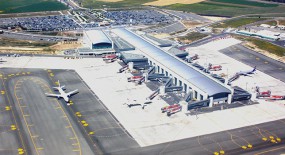



Hi Jeremy, just read your blog on ALCMS Past Present and Future. Just an interesting note from my side. In 1998 i was working for Siemens in the UK developing Airport Business and we installed an ALCMS at Manchester Airport which had an airfield layout mimic interface. The mimic was a screen printed plastic overlay with conductive ink sensors in the taxiways. When an aircraft landed ATC could run a finger down the taxiway over the sensors and illuminate the green centrelines on the Airfield. All the junctions were inhibited with stopbar lights to ensure safe passage of the aircraft. The control was by Simatic S5 “warm standby” plc’s. I believe this was a first for 1) PLC control and 2) the first “Follow the Green” system. However the ATC controllers thought it was an operationally arduous system and continued their historic operation of switching all the lights on and using radio contact to guide aircraft to the stands. My opinion was that the were protecting their positions as it was actually a safer and less arduous system than the one they were using. Now all these years later the “Follow the Greens” seems to be the system to use, obviously, with more modern actuation control. By the way Siemens Germany were furious with us saying that they were currently developing such a system, my reply infuriated them even more as i said “Fine, you carry on developing, we have actually successfully commissioned such a system with orders from other Airports”. I think i ruined my promotion opportunities there ?? However, its nice to see people showing how these systems develop over the years. Keep on Bloggin’
I have learn several just right stuff here. Definitely price bookmarking for revisiting. I wonder how so much attempt you put to make the sort of great informative web site.
Interesting article : Ira … the first PLC system was actually from the OLD “GEC Electrical Projects” company at Rugby, UK (previously the GEC Overseas Service … then thereafter Cegelec Projects, Alstom & nowadays consumed into ATG).
In 1989 we produced a system utilising the old GEC PLC GEM 80 system with Microgem remotes in the field. It worked ! However, personnel changed, people moved on, company ownership changed etc etc and the system lay dormant hence not developed any further !
It was interesting when I joined ADB in Zaventem in the early 2000’s because “Systems” considered the AGL Control and field control & monitoring as a newly derived PLC based technology so having originally come from the aircraft engineering industry where gas turbine & autopilot control & monitoring was the normal …. YES, I found it amusing !!
I’m not that much of a online reader to be
honest but your blogs really nice, keep it up! I’ll go ahead and bookmark
your site to come back later. Cheers